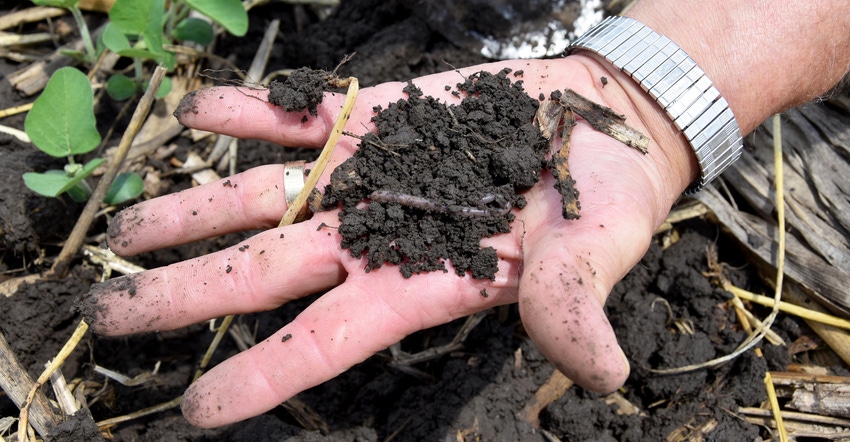June 21, 2018

By Mahdi Al-Kaisi
Building soil health is important to sustain soil resiliency and productivity. Many conservation practices can maintain and enhance physical, chemical and biological soil properties that contribute to overall soil biological functions as fundamental drivers that support plant growth and productivity.
However, these properties are complex and interrelated, as each function is influenced by a central building block: soil organic matter. Soil health is one of the co-benefits of improving SOM through soil carbon sequestration or storage.
Therefore, when we think about soil health, we need to keep in mind the role of SOM as a central property in choosing management practices that rejuvenate soil biological system and functions. There is a tendency to oversimplify and divide these properties into discreet parameters with no linkage to SOM in assessing soil health indicators. The approach to the assessment of soil health by focusing on SOM can reduce the commercialization of soil health.
Increasing soil organic matter
Overall, it’s been documented by research and is well-accepted that there is a relationship between the improvement of SOM and soil physical, chemical and biological properties. In addition, there is a consensus that SOM plays an essential role in a biologically diverse and well-balanced soil system.
A good example is the highly productive Mollisol soil in the Midwest, which is high in organic matter compared to other soil that has low organic matter. It is true that a gradient in SOM is influenced by the soil-forming factors of climate, organisms, time, topography and parent materials, which collectively define soil properties. However, among these factors, climate and organisms are defined as active factors compared to time, topography and parent materials, which are passive factors because their effects are not immediately observed.
Each farmer needs a plan
The interactions between factors involved in soil formation requires a careful approach of assessing soil health to create a matrix that is easy to understand by farmers and practitioners, reflects management effects and is economically affordable. There are two approaches to determining soil health parameters:
• the basic research approach to understand the fundamental processes and relationships between soil parameters and to shed light on the mechanisms governing those relationships (i.e., ecosystem services)
• the applied approach, which determines the influence of management practices (tillage, crop rotation, cover crops, etc.) on SOM as the main driver of soil health indicators (physical, chemical and biological)
Long-term commitment
The applied approach to determining soil health indicators in relation to soil management focuses on SOM as an essential property along with biological indicators to achieve the soil health benefits as an outcome of SOM improvement. Improving the SOM is a slow and long-term process in detecting significant changes as in any conservation system.
This long-term process is due to the instability and potential susceptibility of SOM to loss through soil tillage and weather conditions (loss as carbon dioxide, leaching, sediment loss, etc.). Thus, the focus on soil biological system assessment as an indicator for the short-term SOM improvement is important to consider.
To improve soil health, we need to keep in mind that it is a long-term commitment that requires using a system approach of stacked conservation practices that includes diverse crop rotations, less soil disturbance (no-till), integration of perennial grasses on marginal land and a growing plant during the off-season (cover crop).
The benefits of using a system with multiple practices over a singular practice will improve SOM, soil resiliency and ecosystem services.
Mahdi Al-Kaisi is an Iowa State University agronomy professor, specializing in soil management and the environment. For more information, visit his ISU web page.
You May Also Like




